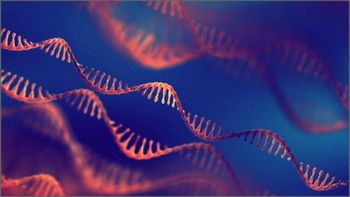
Nanospray Laser-Induced Plasma Ionization Mass Spectrometry to Analyze Persistent Organic Pollutants
Scientists from the Guangdong Academy of Sciences and the Guangdong University of Technology used nanospray laser-induced plasma ionization mass spectrometry (nLIPI-MS) to analyze broad polarity organic pollutants under ambient and open-air conditions.
Scientists from the Guangdong Academy of Sciences and the Guangdong University of Technology in Guangzhou, China used nanospray laser-induced plasma ionization mass spectrometry (nLIPI-MS) to perform sensitive and high-coverage analysis of broad polarity organic pollutants under ambient and open-air conditions. Their findings were published in Analytical Chemistry (1).
Persistent organic pollutants (POPs) are toxic chemicals that can negatively affect human health and the international environment (2). These pollutants can be transferred via wind and water. POPs persist for long periods of time in the environment and can accumulate and pass from one species to the next through the food chain. POP exposure has been linked to declines, diseases, or abnormalities in numerous wildlife species. In 1995. the United Nations Environment Programme expanded its research and investigation on POPs, focusing on a group of 12 highly persistent and toxic chemicals: aldrin, chlordane, DDT, dieldrin, endrin, heptachlor, hexachlorobenzen, mirex, polychlorinated biphenyls, polychlorinated dibenzo-p-dioxins, polychlorinated dibenzofurans, and toxaphen. Many of these pesticides are no longer used for agricultural purposes, but a few continue to be used in developing countries.
Since then, additional substances, such as carcinogenic polycyclic aromatic hydrocarbons (PAHs) and certain brominated flame-retardants, as well as organometallic compounds such as tributyltin (TBT) have been added to the list of POPs. Further, through contaminated foods, water, or direct chemical contact, POPs can have adverse reproductive, developmental, behavioral, neurologic, endocrine, and immunologic health effects in humans. With how dangerous organic pollutants can be, accurate, sensitive, and high-coverage analysis of POPs in complex samples and single cells is vital, especially for tracking their environmental behaviors and toxic effects.
In this study, the scientists proposed a a nanospray laser-induced plasma ionization mass spectrometry (nLIPI-MS) method for sensitive and high-coverage analysis of broad polarity organic pollutants under ambient and open-air conditions. This nLIPI-MS method, which combines nanospray with laser-induced plasma ionization, enables direct analysis without sophisticated sample pretreatment. For analyzing nonpolar and extremely weakly polar OPs, such as polycyclic aromatic hydrocarbons (PAHs) and alkyl-PAHs, the nLIPI-MS method showed desirable analytical performance, with limits of detection (LODs) as low as the µg/L level. For moderately polar OPs like p-phenylenediamine quinones (PPD-Qs), nLIPI-MS showed significant enhance sensitivity by 1–2 orders of magnitude when compared to nanoelectrospray ionization (nESI)-MS.
When used for more polar OPs, such as per- and polyfluoroalkyl substances (PFAS) nLIPI-MS displayed good analytical performance, with a sensitivity improvement of 1.3–2.7-fold over that of nESI-MS. As for nLIPI-MS for analyzing PPD-Qs and PFASs, the technique’s sensitivity reached as low as the ng/L level, allowing the analysis of ultratrace levels of pollutants in complex samples and single cells. Overall, nLIPI-MS was shown to be an extensive ambient MS method, showing desirable analytical performance for analyzing organic pollutants with broad polarity ranges.
References
(1) Yang, Y.; Xie, J.; Wu, Y.; Liu, N.; Deng, L; Luan, T. Nanospray Laser-Induced Plasma Ionization Mass Spectrometry for Sensitive and High-Coverage Analysis of Broad Polarity Organic Pollutants. Anal. Chem. 2024. DOI:
(2) Persistent Organic Pollutants: A Global Issue, A Global Response. United States Environmental Protection Agency 2024.
(3) Persistent Organic Pollutants (POPs) and Pesticides. United Nations Environment Programme 2024.
Newsletter
Join the global community of analytical scientists who trust LCGC for insights on the latest techniques, trends, and expert solutions in chromatography.




